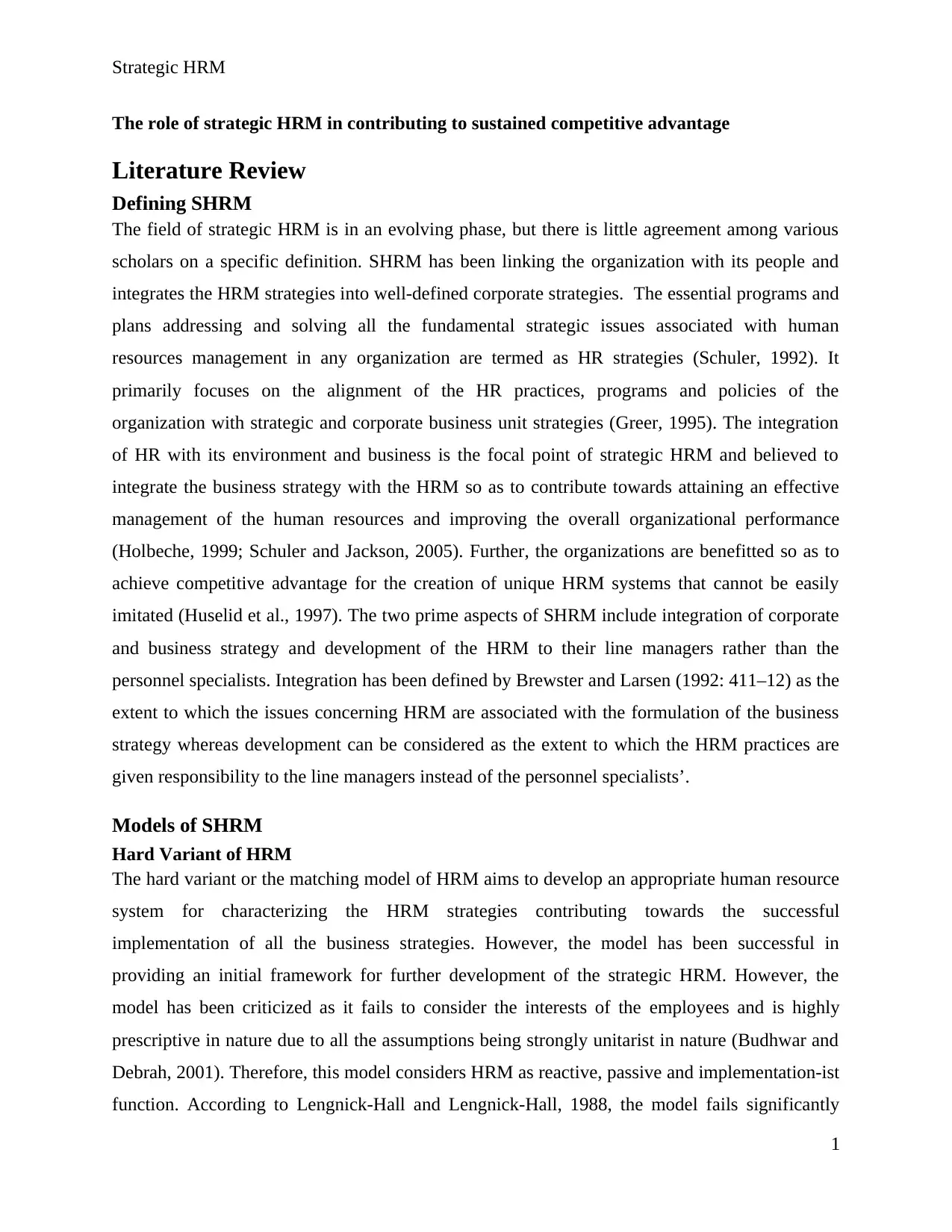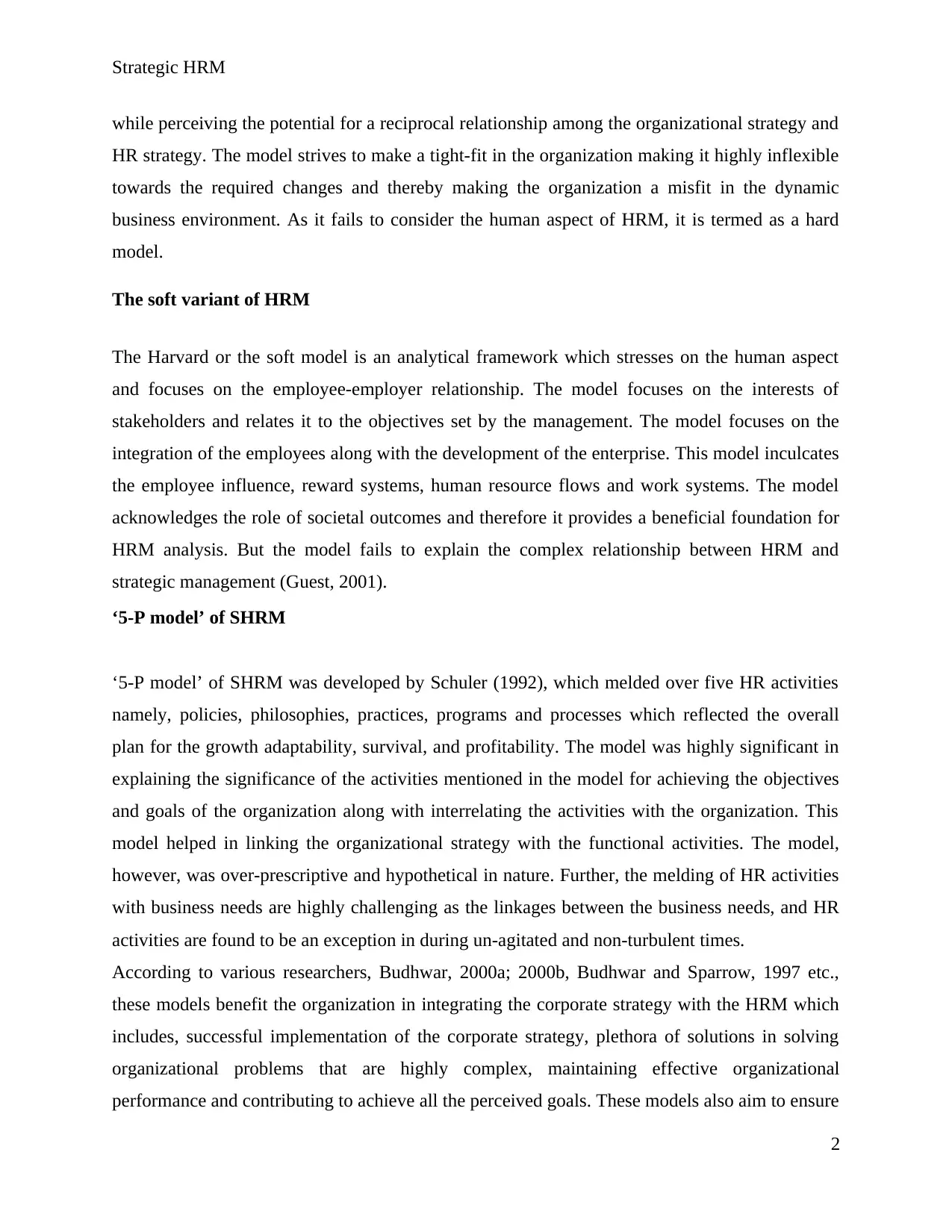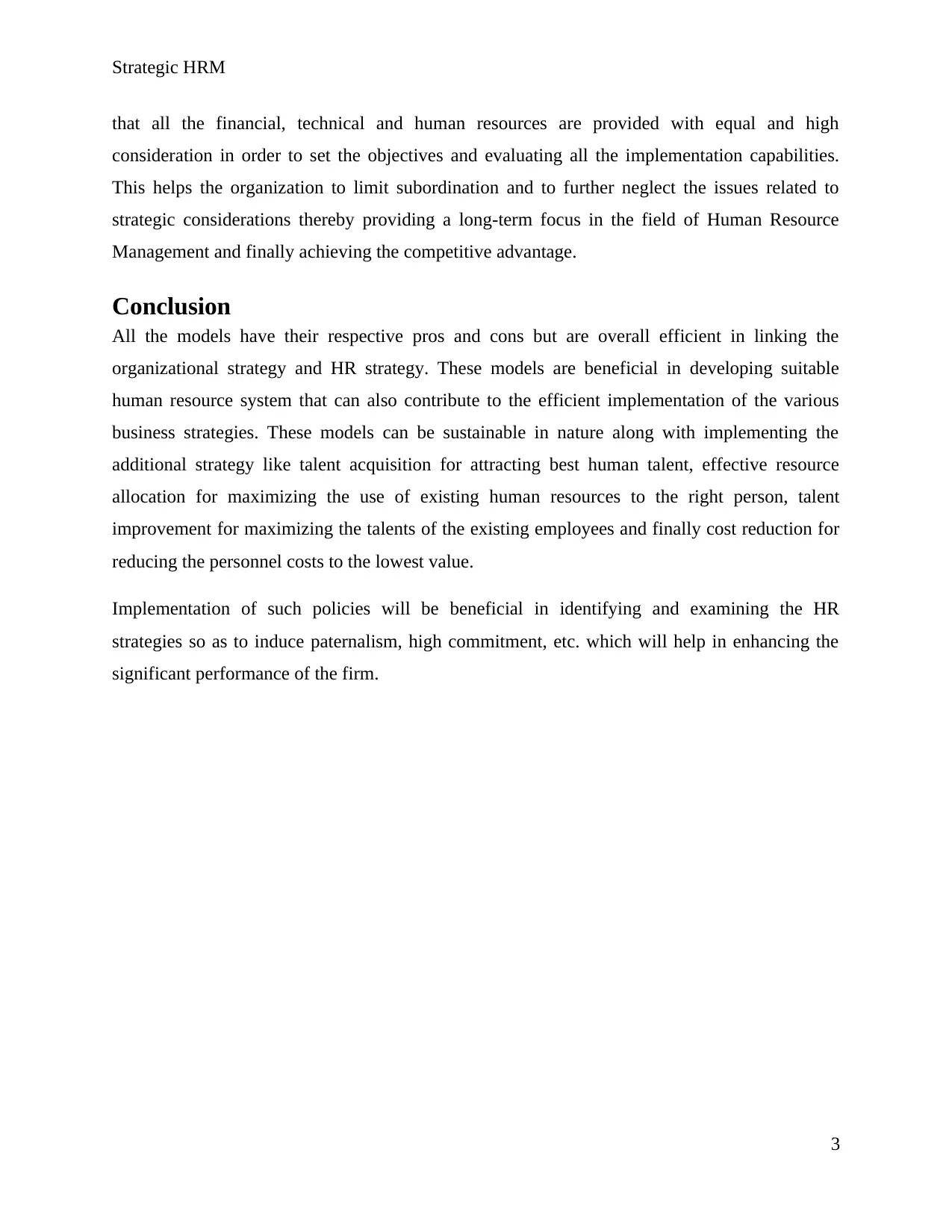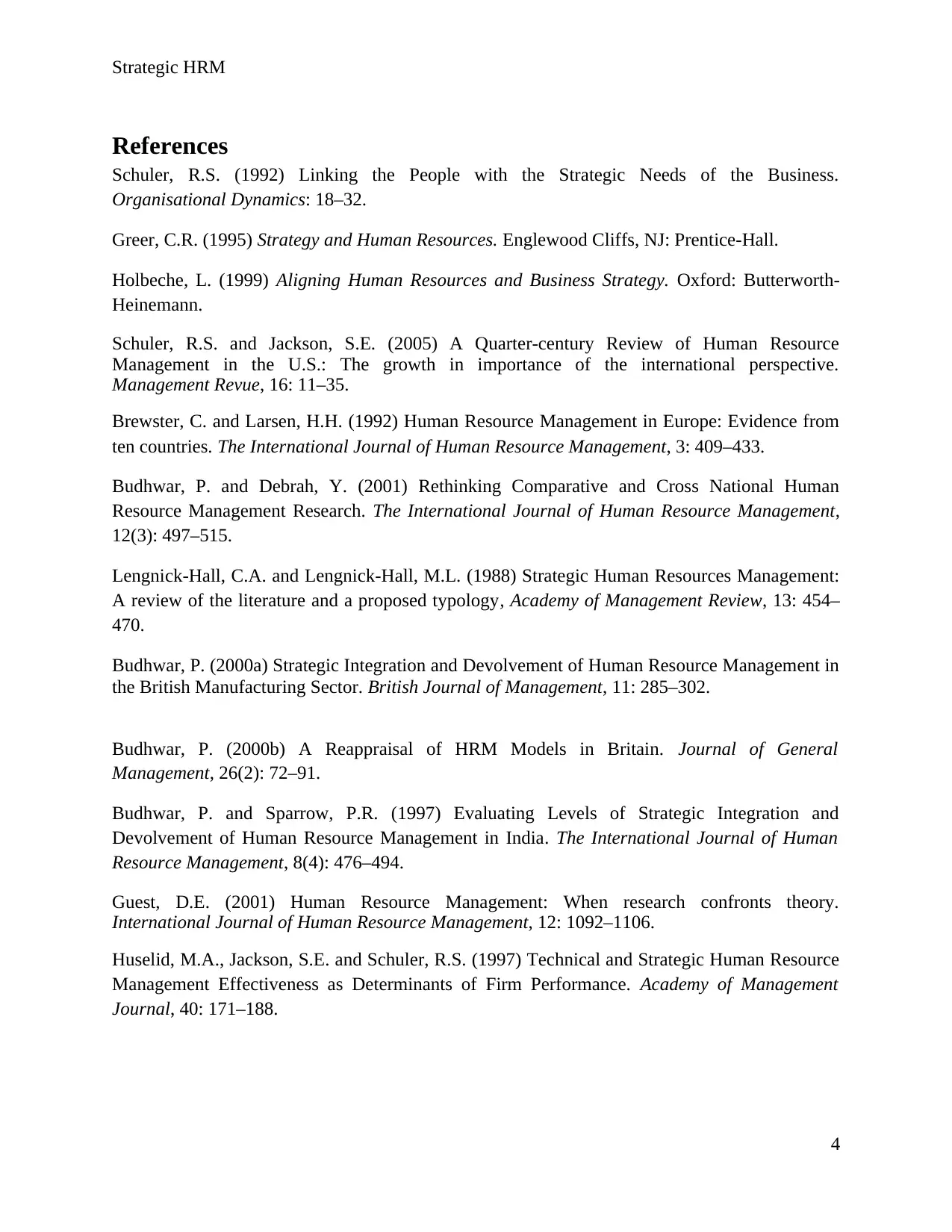The Role of Strategic HRM in Sustained Competitive Advantage: Review
VerifiedAdded on 2019/09/20
|6
|1408
|276
Literature Review
AI Summary
This literature review delves into the field of Strategic Human Resource Management (SHRM) and its contribution to sustained competitive advantage. It begins by defining SHRM and its core focus on aligning HR practices with business strategies, emphasizing the integration of HR with the business environment to improve organizational performance and create unique, inimitable HRM systems. The review then explores various models of SHRM, including the hard and soft variants, highlighting their strengths and weaknesses. The hard model, or matching model, is criticized for its inflexibility and failure to consider employee interests, while the soft model, or Harvard model, is praised for its focus on the human aspect but lacks in explaining the complex relationship between SHRM and strategic management. The 5-P model, developed by Schuler (1992), is also discussed, emphasizing its role in linking organizational strategy with functional activities, although it is noted for being over-prescriptive. Finally, the review concludes by summarizing the benefits of these models in developing suitable human resource systems that contribute to the implementation of various business strategies, including talent acquisition, resource allocation, talent improvement, and cost reduction, ultimately enhancing firm performance and achieving a competitive advantage. The review emphasizes that though the models have their respective pros and cons, they are overall efficient in linking the organizational strategy and HR strategy.
1 out of 6












![[object Object]](/_next/static/media/star-bottom.7253800d.svg)